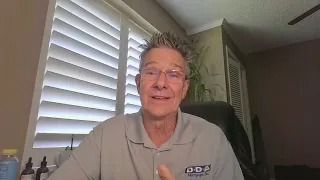Home equity loan vs. HELOC – What’s the difference?
While mortgage rates are high and economic uncertainty looms, there is good news for borrowers who already have a mortgage and may be looking to tap into their equity.
According to Black Knight’s mortgage monitor report, the country’s housing equity position remains strong compared to its position at the beginning of the pandemic, with equity positions $5 trillion, or 46%, above pre-pandemic levels. The average mortgage holder is up by more than $92,000 compared to the start of the pandemic.
Home equity loans and home equity lines of credit (HELOCs) are both loan products that are secured by the equity on a borrower’s home.
But which is the best option for your borrower? Read on to find out.
What is a home equity loan?
A home equity loan – also referred to as a second mortgage, a home equity installment loan or an equity loan – is a fixed-term loan based on the equity in a borrower’s home. Borrowers apply for a set amount of money that they need and receive that money as a lump sum if approved. Home equity loans have a fixed interest rate and a set schedule of fixed payments for the life of the loan.
The equity in your borrower’s home serves as the collateral for a home equity loan, so there needs to be enough equity in the home for the borrower to qualify. The loan amount is based on several factors, including the combined loan-to-value ratio and whether the borrower has a good credit history. Typically, a home equity loan amount can be 80-90% of the property’s appraised value.
The interest rate on a home equity loan is fixed and so are the payments, meaning the interest rate doesn’t change with time and the payments are equal over the life of the loan. The term of an equity loan can be between five to 30 years, and the borrower will have predictable monthly payments to make for the life of the loan.
Pros and cons
In terms of pros, a home equity loan has a fixed amount – decreasing the likelihood of impulse spending – and a fixed monthly payment amount, which makes it easier for the borrower to budget their payments. This type of loan can also be good for those who need a set amount of cash for something due to the lump sum payout.
The largest potential downside to a home equity loan is that the borrower can lose their home if they can’t make their payments on time. Additionally, tapping all of their equity at once can work against them if property values in their area decline. Home equity loans also require refinancing to get a lower interest rate, and the borrower can’t take out more money for an emergency without taking out another loan.
What is a HELOC?
A HELOC is a revolving credit line that allows the borrower to take out money against the credit line up to a preset limit, make payments on that line of credit and then take out money again. Rather than receiving the loan proceeds as a lump sum, with a HELOC the borrower can tap into their line of credit as needed. That line of credit remains open until its term ends. The amount borrowed can change, which means the borrower’s minimum payments can also change based on the credit line’s usage.
HELOCs are also secured by the equity in a borrower’s home. While it shares characteristics with a credit card due to being a revolving credit line, a HELOC is secured by that asset, while credit cards are unsecured. HELOCs have a variable interest rate, which can increase or decrease over time. That means the minimum payment can increase as rates rise. Additionally, the rate will depend on the borrower’s creditworthiness and how much they’re borrowing.
HELOC terms have two parts – a draw period and a repayment period. The draw period is the time during which borrowers can withdraw funds. During this period, the borrower will have to make payments, but they tend to be interest-only and therefore typically small. When the draw period ends and the borrower enters the repayment period, they cannot borrow any more money, and their payments now include the principal amount borrowed along with the interest.
Pros and cons
HELOCs come with a few advantages. The borrower can choose how much or how little of their credit line to use, and that credit line will be available for emergencies and other variable expenses. Variable interest rates mean that a borrower’s interest rate and payments could potentially go down if their credit improves or market interest rates go down. The borrower pays the interest compounded only on the amount they draw, not the total equity available in the HELOC. And HELOCs have a lower interest rate compared to other options to get cash, such as credit cards or personal loans.
However, because the HELOC is secured by the borrower’s home, they could go into default and lose their home if they stop making their payments on time. It’s also harder to budget for fluctuating payment amounts, and easy for the borrower to accidentally spend up to their credit limit. Variable interest rates mean that the interest rate and payments could potentially increase if a borrower’s credit worsens or market interest rates increase. And the transition from interest-only payments to full, principal-and-interest payments can be difficult for borrowers.
How to choose between a home equity loan and a HELOC
The best way to approach the choice between a home equity loan and a HELOC is to ask the borrower about the purpose of the loan.
If they know exactly how much they need to borrow and how they want to spend the money, a home equity loan can be a good choice. Many borrowers use home equity loans for big expenses such as a college fund, remodeling or debt consolidation.
If the borrower is unsure exactly how much they need to borrow or when they’ll need to use it, a HELOC may be the better choice. The borrower will have ongoing access to cash for a set period, and can borrow against the line, repay it partially or in full and borrow that money again later, provided they are still in the HELOC’s draw period. HELOCs also generally process slightly faster than a home equity loan, if the borrower needs money more quickly.
Have A Question?
Use the form below and we will give your our expert answers!
Reverse Mortgage Ask A Question
Start Your Loan
with DDA todayYour local Mortgage Broker
Mortgage Broker Largo See our Reviews
Looking for more details? Listen to our extended podcast!
Check out our other helpful videos to learn more about credit and residential mortgages.





